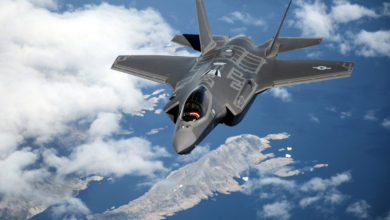Lockheed Martin awarded $26.3 million contract for compact airborne high-energy laser
Lockheed Martin has been awarded a $26.3 million contract for the design, development and production of a high-power fiber laser directed energy weapon for fighter aircraft, the company said in a Monday, November 6 press release.
The contract was awarded by the Air Force Research Lab as part of its Self-protect High Energy Laser Demonstrator (SHiELD) program which plans to test the laser on a fighter jet aircraft by 2021.
Dr. Rob Afzal, senior fellow of laser weapon systems at Lockheed Martin said the company is rapidly advancing laser weapon systems and technology. “We have demonstrated our ability to use directed energy to counter threats from the ground, and look forward to future tests from the air as part of the SHiELD system,” Afzal said.

SHiELD consists of three subsystems – SHiELD Turret Research in Aero Effects (STRAFE), which will control the beam and direct it against the target; Laser Pod Research & Development (LPRD), which is a pod to power and cool the laser; and Laser Advancements for Next-generation Compact Environments (LANCE), the high-energy laser itself.
The Lockheed team is working on LANCE to develop a “compact, high-efficiency laser within challenging size, weight and power constraints,” the release said.
“Earlier this year, we delivered a 60 kW-class laser to be installed on a U.S. Army ground vehicle. It’s a completely new and different challenge to get a laser system into a smaller, airborne test platform,” Afzal said. “The technologies are ready to be produced, tested and deployed on aircraft, ground vehicles and ships.”
Lockheed Martin has been developing laser weapon systems for more than 40 years, and LANCE leverages internal research and development projects, including the ATHENA system and ALADIN laser, as well experience from programs like the U.S. Army’s Robust Electric Laser Initiative (RELI) program.












